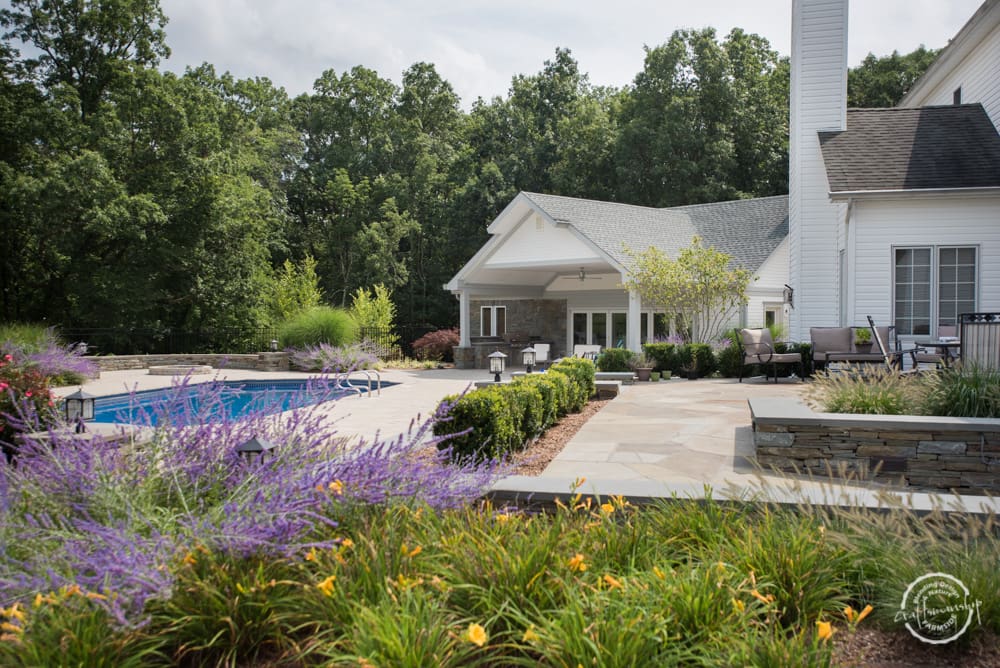
Whether we’re ready for it or not, 2022 is almost here. Focus on the landscape shot up at the start of the pandemic and that appreciation for the outdoors isn’t going anywhere.
Below are some of the industry and design trends that landscape professionals are expecting to see going strong next year.
Industry Trends
While COVID-19 has driven the demand for lawn care and landscape services, it has also thrown a wrench in the supply chain when it comes to meeting customer desires.
The availability of products like drainage pipes to hardscaping pavers has all been affected.
“You can’t find it,” says Miles Kuperus, Jr., LIC, owner of Farmside Landscape & Design in Sussex, New Jersey. “Designing for drainage is becoming a basic element of installing your landscape. That’s becoming an issue because the resin is the problem behind that.”
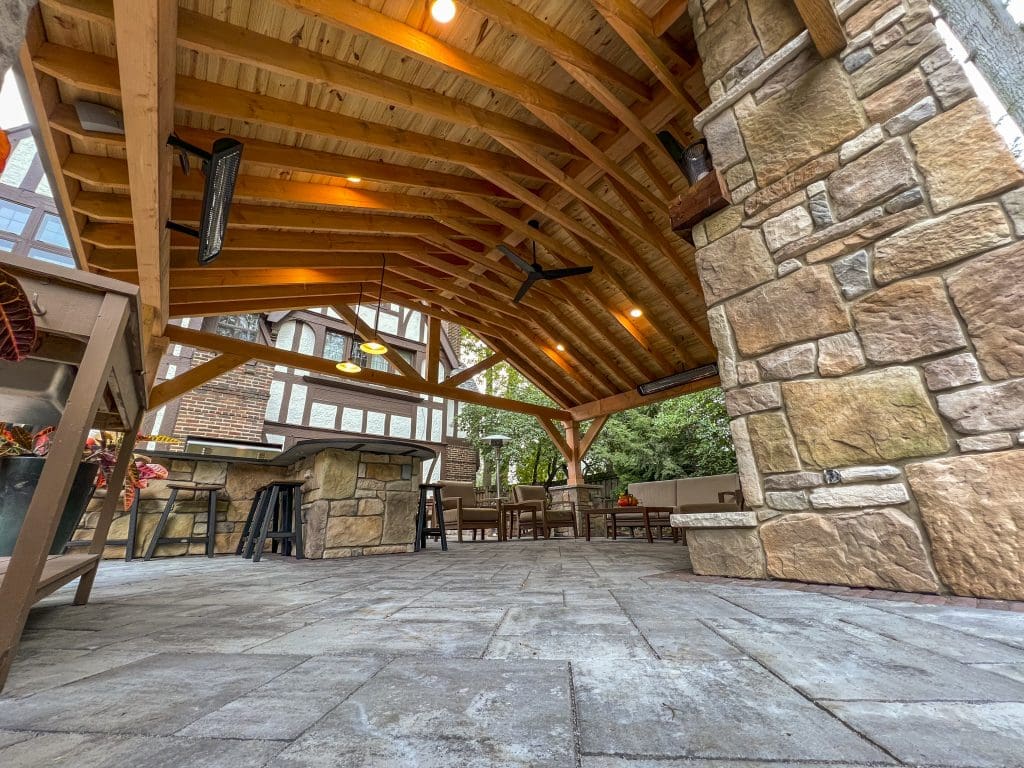
Justin Gamester, president of Piscataqua Landscaping & Tree Service based in Eliot, Maine, says landscapers need to be paying attention to all of their needed products as one week one type of paver might be out of production and then the next week it’s another paver product.
“You have to be paying attention to all of it,” Gamester says. “Because unfortunately, you can’t really figure out what’s going to be next.”
Gamester says they have shortened the defined timeframe that a proposal is valid for because he cannot guarantee the price of things for an extended period anymore.
Tony Nasrallah, president and founder of Ground Works Land Design based in Cleveland, Ohio, says their project timelines have been impacted by these material shortages. What once used to take 2 weeks to complete now can take 5 weeks just because they’re waiting on raw material.
Even when products are available, their prices are soaring. Josh Flynn, CEO of Seabreeze Property Services, based in Portland, Maine, says fertilizer prices are going up by 25 to 30 percent. He expects their mulch prices to go up 5 to 10 percent and hard goods are going up 5 to 10 percent every few months.
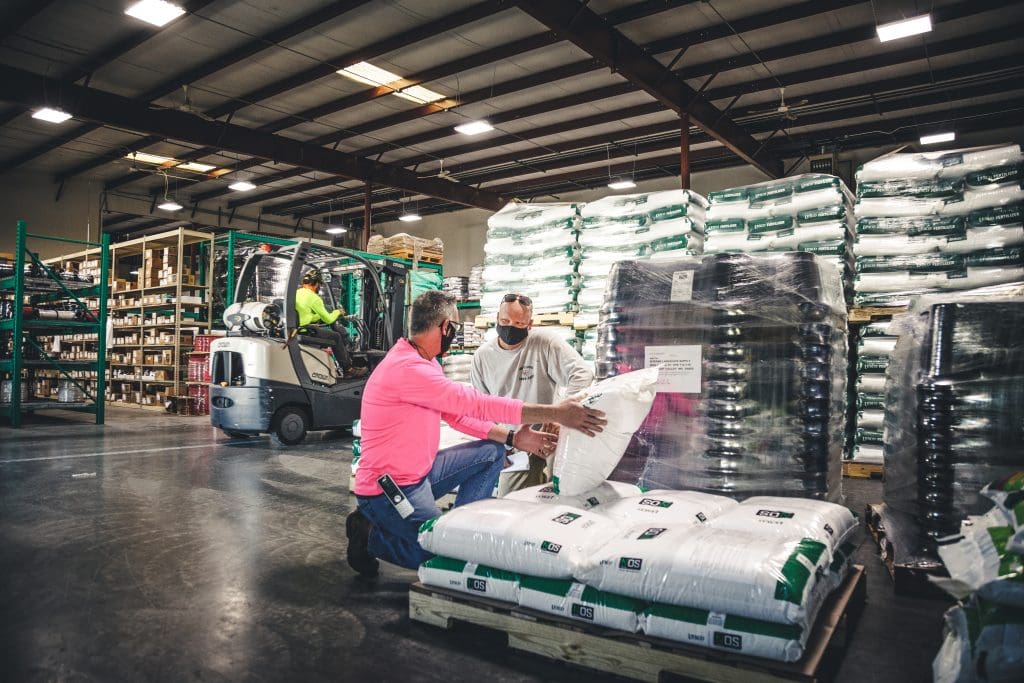
“Costs are going to keep going up, maybe not as drastically but progressively over time next year and supplies are still going to be limited,” Flynn says.
Pay for labor is also expected to increase as companies struggle to attract and retain employees.
“I think the industry as a whole is going to face the same thing next year that they’re facing right now, which is increased demand, labor shortage, material and supply chain issues, all those things are going to happen into 2022,” Gamester says. “When does that go away? The answer is unknown.”
Plant Material and Colors
Gamester, Nasrallah and Flynn all expect to deal with plant material shortages next year.
“I was able to secure my plant material pretty good,” Kuperus says. “They did warn me that they went into the following season’s product line in order to satisfy orders.”
“When you’re thinking about jobs overall, you should probably think about what your tried and true plants are because they seem to be available,” Gamester says. “But when you get into some of the larger stuff or a little more specialty type stuff, you’ve really got to be careful of what you’re promising people.”
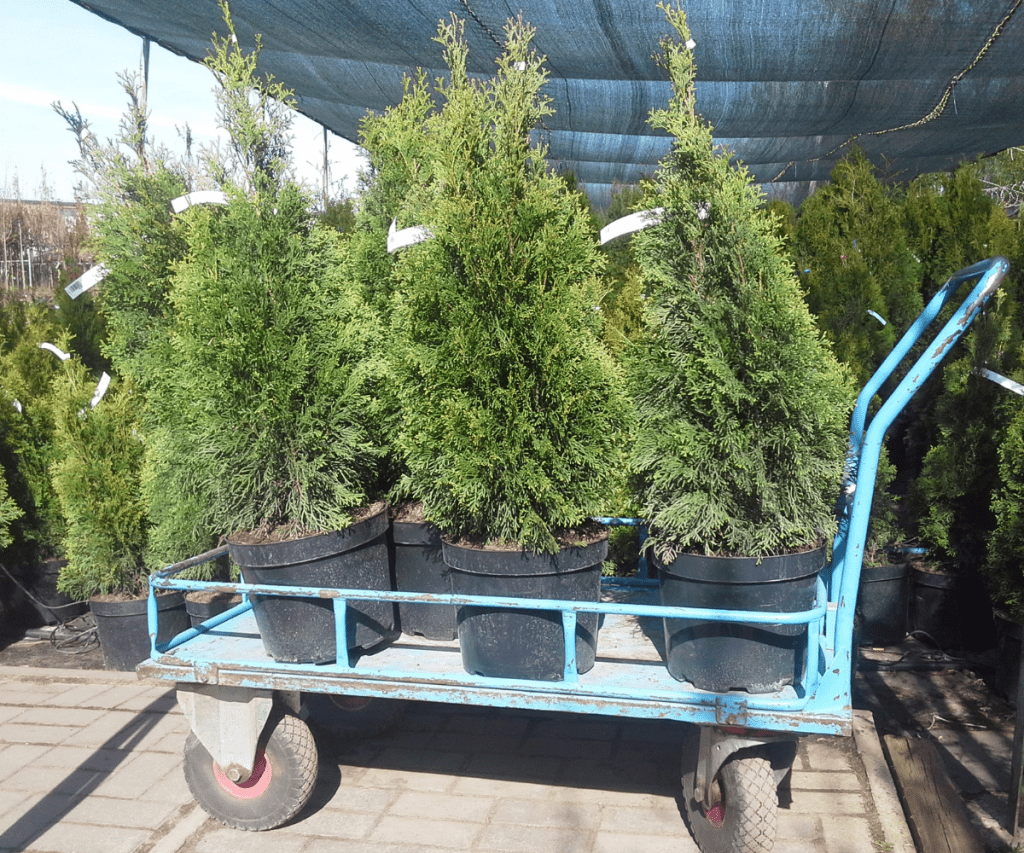
Screening plants like arborvitae and other large evergreens are some of the plants to expect to be in short supply next year.
“I go all the way back to 2008 when the economy was slightly tweaked, and growers didn’t grow as much,” Gamester says. “I think a combination of that, with the demand and some of the significant weather challenges these folks have had in the growing industry, they just can’t get ahead.”
Flynn says they’ve had issues sourcing anything bigger than a 2-inch caliper tree and particularly ornamental fruit trees.
“I think every nursery person that I’ve talked to, it’s they’ve had some of the best sales years they’ve ever had,” Flynn says. “But I don’t think that the nursery stock throughout the country is prepared for that.”
Gamester says he’s had trouble sourcing fruit trees as well.
“The trends are what’s driving the shortage,” Gamester says. “It’s making it so you can’t meet the trends. You have to be creative and make it work with other things because the trend sometimes drives the shortage.”
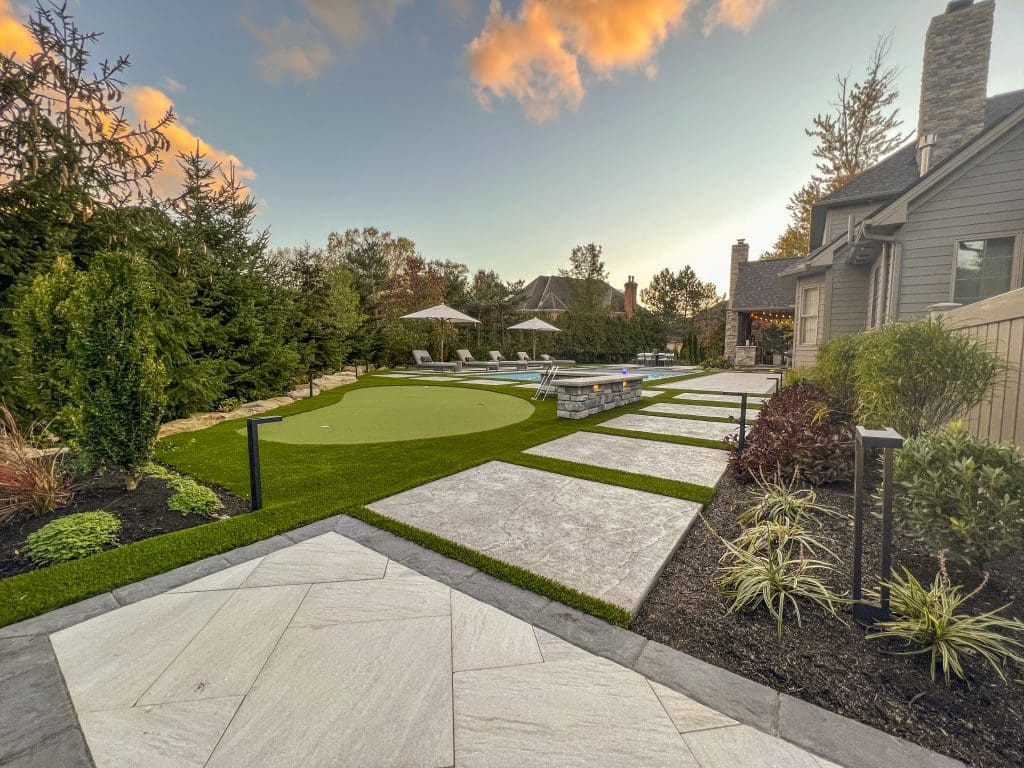
Nasrallah expects the grass seed shortage to affect landscape professionals in 2022 and even if they can get the seed it will be three to five times higher in price.
“In our specific market, we’re seeing more requests for turf installations,” Nasrallah says. “With the variety of color and texture options, plus incredibly low maintenance, I think turf will continue to trend into 2022.”
As for predicted popular plants, Flynn believes native plants will thrive as they continue to receive more attention. Kuperus says hydrangeas and spireas will be big sellers as well. He expects blues, purples, yellows and whites to be the popular colors next year, and not a lot of reds and oranges.
Making the Most Out of Outdoor Spaces
The longer people remain home, the more commonplace their desire to spruce up the house and landscape is becoming.
“I think there’s a new realization of how people interact,” Kuperus says. “They want to be home and minimize their exposure and enjoy the people they have on their property.”
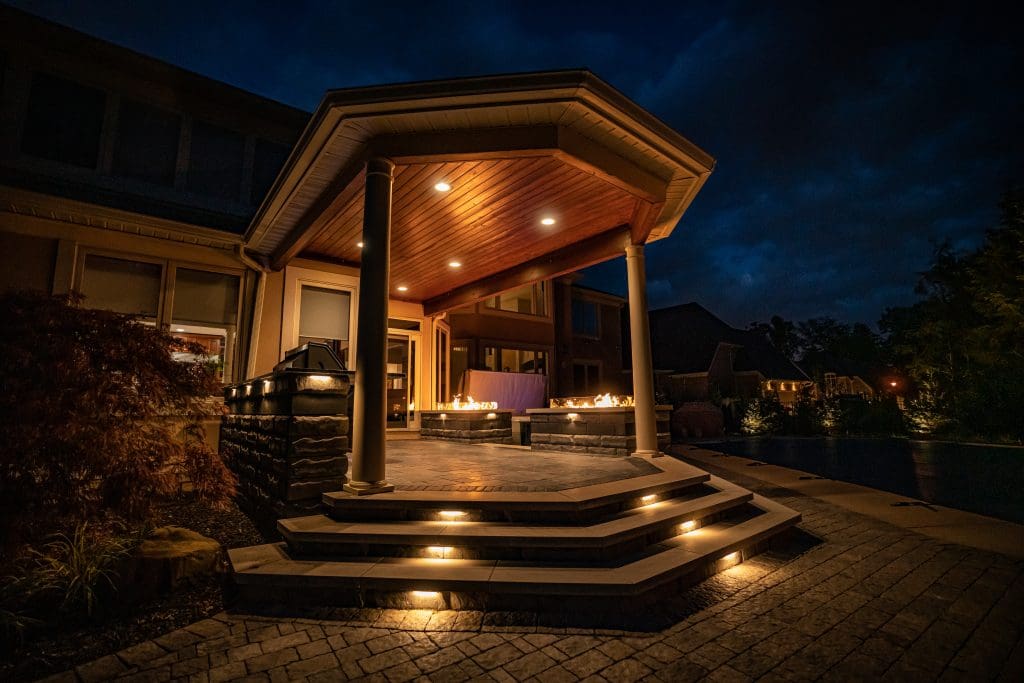
Gamester does not expect the demand for landscape construction projects to slow in 2022. He says he’s seen an uptick in customers wanting to extend the season through features like holiday decorating, landscape lighting or outdoor firepits. Flynn says fire pits are a common addition to make a patio in November or December in Maine a nice place to be.
“They’re looking for on the plant side low-maintenance stuff that gives some color and attraction in the winter is something we’ve seen some focus on,” Flynn says. “But overall, on the hardscape side, people are just trying to build more accessible outdoor areas.”
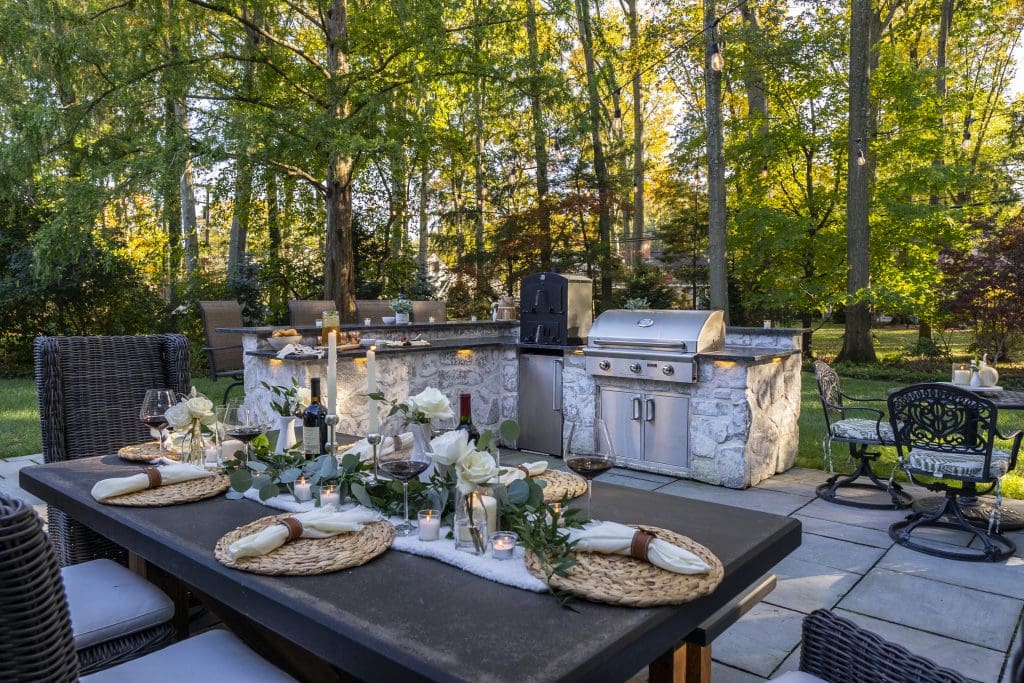
Kuperus sees a continued evolution of more elaborate outdoor living spaces being installed.
“They always want more,” Kuperus says. “They want something special or unique.”
Nasrallah says they’ve seen their customers allocate additional dollars to specific install features that allow them to enjoy their spaces for longer periods of time.
“Most of the clients we build pavilions for make sure to run overhead electric so that they can install space heaters for the colder months,” Nasrallah says. “This year, we also received a few requests for motorized shades/shields that run over the top of pergolas and even on the sides of pavilions and designated outdoor seating areas. The longer through the year a customer can use their outdoor space, the better.”
Popular Design Elements
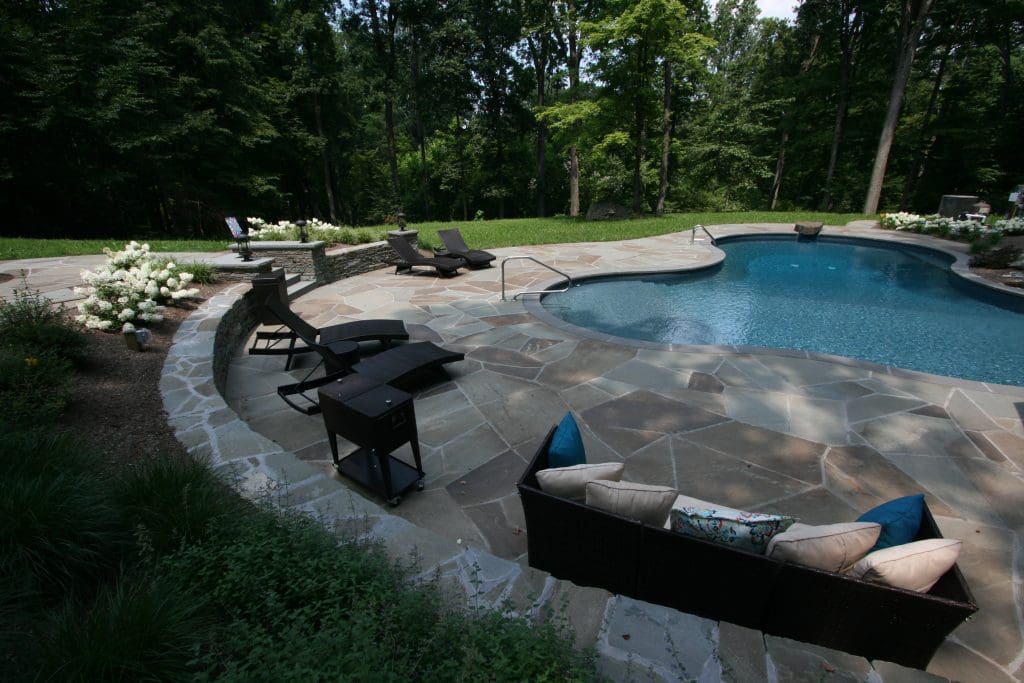
Pools remain in high demand after the pandemic sparked a desire for staycation spaces. Kuperus says he’s already sold three elaborate pool projects for next year. Gamester says the pool contractor he works with is still digging pools and has already been booked into next spring and summer.
“Pool builders that we work with are booked into 2023 at this point,” Nasrallah says. “Ground Works is fortunate to work with a very affluent demographic, and if anything, the pandemic has excelled large scale installations. Pools are at the top of that list.”
Flynn has noted an increase in installing freestanding seating walls. Customers are preferring these seating walls over other pieces of furniture around a fire feature. He says fire pits have been installed on almost every single job they’ve done recently.
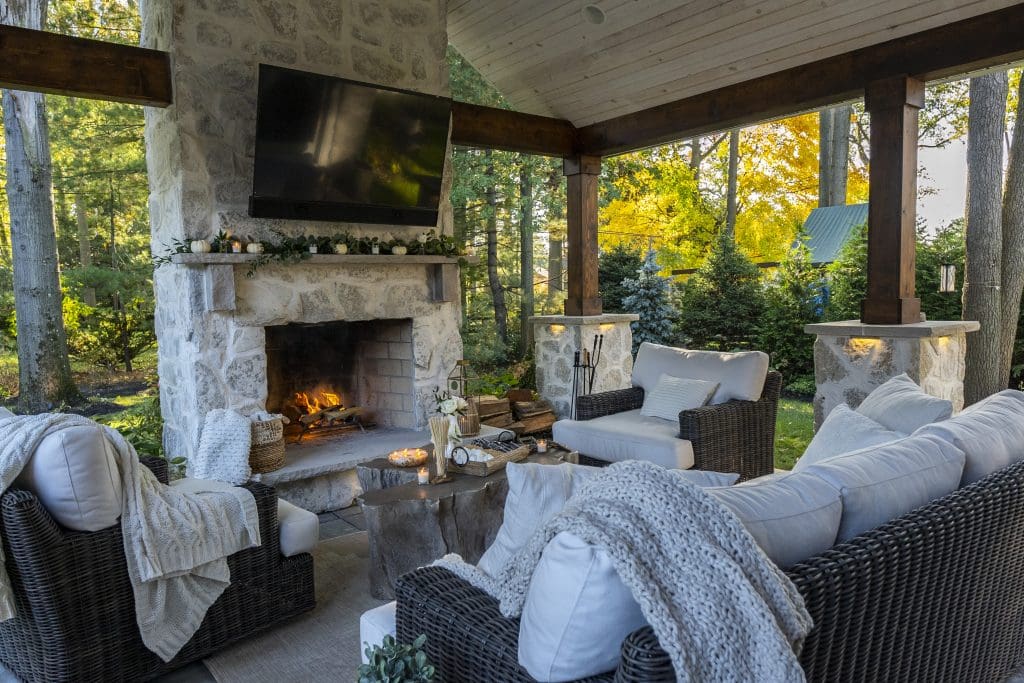
“Adding sitting walls to these to these patios as a seating element with like a fire pit in the middle is something I feel like has been a pretty easy upsell,” Flynn says.
Outdoor kitchens, pavilions, pergolas, outdoor fireplaces and fire pits are all features that are expected to remain popular. Nasrallah says it’s all about the outdoor living spaces and they work to create a seamless transition from the inside to the outside.
“Ground Works Land Design specializes in creating dramatic outdoor living spaces, and that means exactly what it sounds like,” Nasrallah says. “Think of your favorite room inside your home – we build that for you, only outside. Elements like fireplaces, TVs, full kitchens and even refrigerators are popular requests among our clients.”

